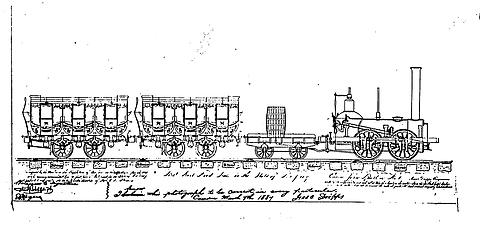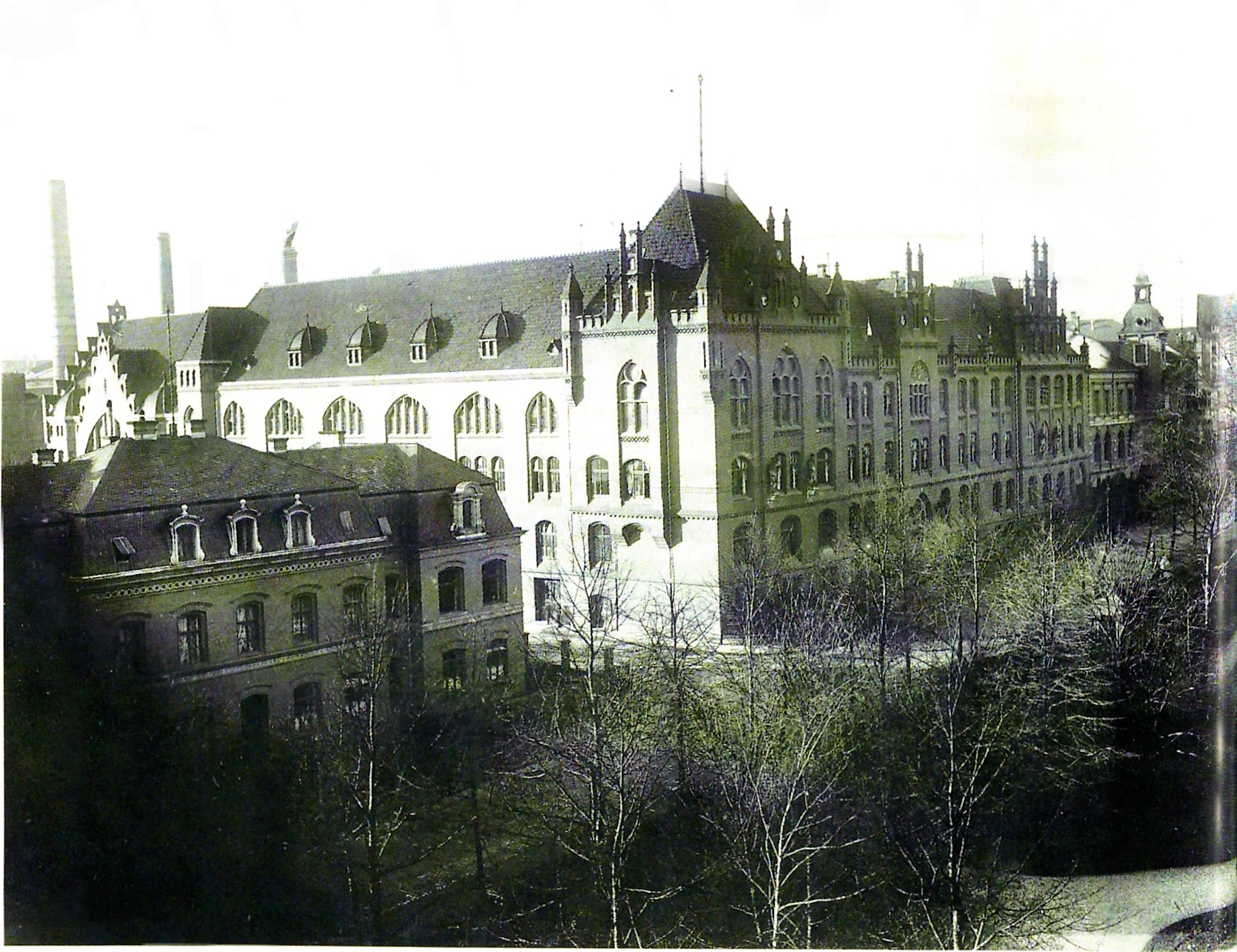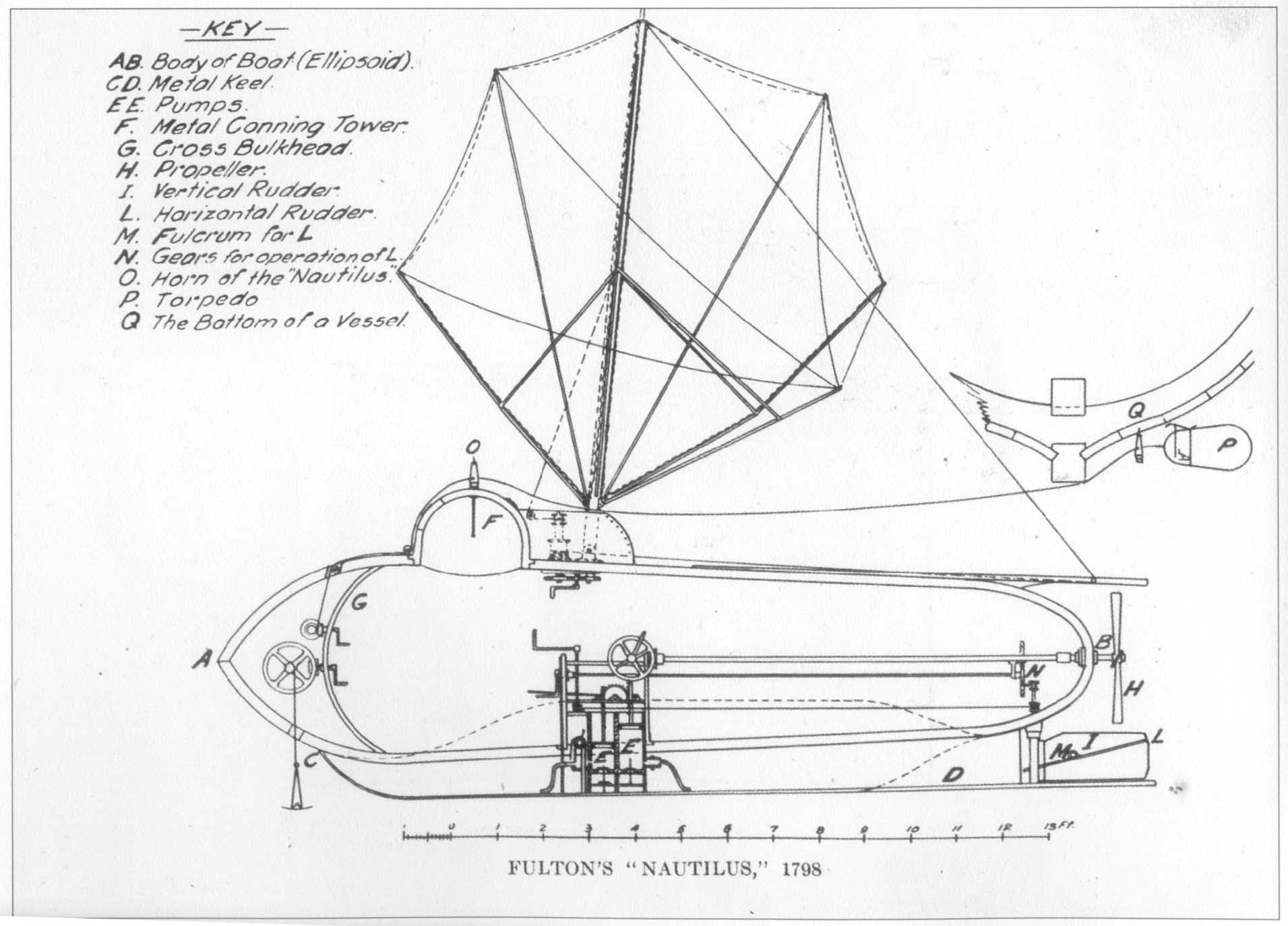|
Robert Livingston Stevens
Colonel Robert Livingston Stevens (October 18, 1787 – April 20, 1856) was an American inventor and steamship builder who served as president of the Camden and Amboy Railroad in the 1830s and 1840s. Early life Stevens was born in Hoboken, New Jersey on October 18, 1787. He was the second son of thirteen children born to Rachel (née Cox) Stevens and Colonel John Stevens III. His siblings included older brother John Cox Stevens, the first commodore of the New York Yacht Club, and younger brother Edwin Augustus Stevens, who founded the Stevens Institute of Technology. His paternal grandparents were John Stevens Jr., a prominent New Jersey politician who served as a delegate to the Continental Congress, and Elizabeth (née Alexander) Stevens, who was the daughter of James Alexander, the Attorney General of New Jersey, and Mary (née Spratt) Provoost Alexander, a prominent merchant. His aunt Mary Stevens married Robert R. Livingston, the first Chancellor of the State of Ne ... [...More Info...] [...Related Items...] OR: [Wikipedia] [Google] [Baidu] |
Hoboken, New Jersey
Hoboken ( ; Unami: ') is a city in Hudson County in the U.S. state of New Jersey. As of the 2020 U.S. census, the city's population was 60,417. The Census Bureau's Population Estimates Program calculated that the city's population was 58,690 in 2021, ranking the city the 668th-most-populous in the country. With more than , Hoboken was ranked as the third-most densely populated municipality in the United States among cities with a population above 50,000. Hoboken is part of the New York metropolitan area and is the site of Hoboken Terminal, a major transportation hub for the tri-state region. Hoboken was first settled by Europeans as part of the Pavonia, New Netherland colony in the 17th century. During the early 19th century, the city was developed by Colonel John Stevens, first as a resort and later as a residential neighborhood. Originally part of Bergen Township and later North Bergen Township, it became a separate township in 1849 and was incorporated as a city in 1855 ... [...More Info...] [...Related Items...] OR: [Wikipedia] [Google] [Baidu] |
CA DRCC 1834
CA or ca may refer to: Businesses and organizations Companies * Air China (IATA airline code CA) * CA Technologies, a U.S. software company * Cayman Airways, a Cayman Islands airline * Channel America, a defunct U.S. television network * Classic Army, a Hong Kong-based manufacturer of airsoft replicas * Coal & Allied, Australian mining company * Continental Airlines, a U.S. airline * Creative Assembly, a PC game developer * Crédit Agricole, a major French bank Government and political * Bureau of Consular Affairs, a division of the U.S. Department of State * Canadian Alliance, a former Canadian political party * Centre Alliance, Australian political party formerly known as Nick Xenophon Team * Citizens' Alliance, a political party in Trinidad and Tobago * Combined authority, a local government entity in the United Kingdom * Commission on Appointments, a body of the Congress of the Philippines * Conservatives Abroad, overseas wing of the British Conservative Party * Countryside A ... [...More Info...] [...Related Items...] OR: [Wikipedia] [Google] [Baidu] |
United States
The United States of America (U.S.A. or USA), commonly known as the United States (U.S. or US) or America, is a country primarily located in North America. It consists of 50 states, a federal district, five major unincorporated territories, nine Minor Outlying Islands, and 326 Indian reservations. The United States is also in free association with three Pacific Island sovereign states: the Federated States of Micronesia, the Marshall Islands, and the Republic of Palau. It is the world's third-largest country by both land and total area. It shares land borders with Canada to its north and with Mexico to its south and has maritime borders with the Bahamas, Cuba, Russia, and other nations. With a population of over 333 million, it is the most populous country in the Americas and the third most populous in the world. The national capital of the United States is Washington, D.C. and its most populous city and principal financial center is New York City. Paleo-Americ ... [...More Info...] [...Related Items...] OR: [Wikipedia] [Google] [Baidu] |
Steam Locomotive
A steam locomotive is a locomotive that provides the force to move itself and other vehicles by means of the expansion of steam. It is fuelled by burning combustible material (usually coal, oil or, rarely, wood) to heat water in the locomotive's boiler to the point where it becomes gaseous and its volume increases 1,700 times. Functionally, it is a steam engine on wheels. In most locomotives, the steam is admitted alternately to each end of its cylinders, in which pistons are mechanically connected to the locomotive's main wheels. Fuel and water supplies are usually carried with the locomotive, either on the locomotive itself or in a tender coupled to it. Variations in this general design include electrically-powered boilers, turbines in place of pistons, and using steam generated externally. Steam locomotives were first developed in the United Kingdom during the early 19th century and used for railway transport until the middle of the 20th century. Richard Trevithick ... [...More Info...] [...Related Items...] OR: [Wikipedia] [Google] [Baidu] |
John Bull (locomotive)
''John Bull'' is a historic British-built railroad steam locomotive that operated in the United States. It was operated for the first time on September 15, 1831, and became the oldest operable steam locomotive in the world when the Smithsonian Institution ran it under its own steam in 1981.Klein and Bell, pp 280–1. Built by Robert Stephenson and Company, it was initially purchased by and operated for the Camden and Amboy Railroad, the first railroad in New Jersey, which gave it the number 1 and its first name, "''Stevens''". (Robert L. Stevens was president of the Camden and Amboy Railroad at the time.) The C&A used it heavily from 1833 until 1866, when it was removed from active service and placed in storage. After the C&A's assets were acquired by the Pennsylvania Railroad (PRR) in 1871, the PRR refurbished and operated the locomotive a few times for public displays: it was fired up for the Centennial Exposition in 1876 and again for the National Railway Appliance Exhibit ... [...More Info...] [...Related Items...] OR: [Wikipedia] [Google] [Baidu] |
Albany, New York
Albany ( ) is the capital of the U.S. state of New York, also the seat and largest city of Albany County. Albany is on the west bank of the Hudson River, about south of its confluence with the Mohawk River, and about north of New York City. The city is known for its architecture, commerce, culture, institutions of higher education, and rich history. It is the economic and cultural core of the Capital District of the State of New York, which comprises the Albany–Schenectady–Troy Metropolitan Statistical Area, including the nearby cities and suburbs of Troy, Schenectady, and Saratoga Springs. With an estimated population of 1.1 million in 2013, the Capital District is the third most populous metropolitan region in the state. As of 2020, Albany's population was 99,224. The Hudson River area was originally inhabited by Algonquian-speaking Mohican (Mahican), who called it ''Pempotowwuthut-Muhhcanneuw''. The area was settled by Dutch colonists who, in 1614, built Fort ... [...More Info...] [...Related Items...] OR: [Wikipedia] [Google] [Baidu] |
Cartel
A cartel is a group of independent market participants who collude with each other in order to improve their profits and dominate the market. Cartels are usually associations in the same sphere of business, and thus an alliance of rivals. Most jurisdictions consider it anti-competitive behavior and have outlawed such practices. Cartel behavior includes price fixing, bid rigging, and reductions in output. The doctrine in economics that analyzes cartels is cartel theory. Cartels are distinguished from other forms of collusion or anti-competitive organization such as corporate mergers. Etymology The word ''cartel'' comes from the Italian word '' cartello'', which means a "leaf of paper" or "placard", and is itself derived from the Latin ''charta'' meaning "card". The Italian word became ''cartel'' in Middle French, which was borrowed into English. In English, the word was originally used for a written agreement between warring nations to regulate the treatment and exchange of p ... [...More Info...] [...Related Items...] OR: [Wikipedia] [Google] [Baidu] |
Hudson River Steamboat Association
The Hudson River Steamboat Association was a cartel that operated passenger steamboats on the Hudson River in the U.S. state of New York from 1832 to 1843. It successfully monopolized passenger steamboat traffic on the river between New York City and Albany, New York, and enriched its members through the charging of monopoly prices. The cartel was challenged in 1834 by Cornelius Vanderbilt and by Daniel Drew in 1835; the cartel bribed Vanderbilt to leave the steamboat business, and bribed Drew to join the cartel. History The Hudson River Steamboat Association (HRSA) formed in October 1832. This cartel consisted of the major steamboat lines operating on the Hudson River between New York City and Albany. Member of the cartel included James and Robert Stevens of Hoboken, New Jersey (sons of inventor John Stevens, who founded the Camden and Amboy Railroad), and Dean Richmond, wealthy Albany businessman and political kingmaker. The HRSA was likely the largest steamboat line in the n ... [...More Info...] [...Related Items...] OR: [Wikipedia] [Google] [Baidu] |
Hudson River
The Hudson River is a river that flows from north to south primarily through eastern New York. It originates in the Adirondack Mountains of Upstate New York and flows southward through the Hudson Valley to the New York Harbor between New York City and Jersey City, eventually draining into the Atlantic Ocean at Lower New York Bay. The river serves as a political boundary between the states of New Jersey and New York at its southern end. Farther north, it marks local boundaries between several New York counties. The lower half of the river is a tidal estuary, deeper than the body of water into which it flows, occupying the Hudson Fjord, an inlet which formed during the most recent period of North American glaciation, estimated at 26,000 to 13,300 years ago. Even as far north as the city of Troy, the flow of the river changes direction with the tides. The Hudson River runs through the Munsee, Lenape, Mohican, Mohawk, and Haudenosaunee homelands. Prior to European ... [...More Info...] [...Related Items...] OR: [Wikipedia] [Google] [Baidu] |
Robert Livingston (1746-1813)
Robert Robert Livingston (November 27, 1746 (Old Style November 16) – February 26, 1813) was an American lawyer, politician, and diplomat from New York, as well as a Founding Father of the United States. He was known as "The Chancellor", after the high New York state legal office he held for 25 years. He was a member of the Committee of Five that drafted the Declaration of Independence, along with Thomas Jefferson, Benjamin Franklin, John Adams, and Roger Sherman. Livingston administered the oath of office to George Washington when he assumed the presidency April 30, 1789. Livingston was also elected as a member of the American Philosophical Society in 1801. Early life Livingston was the eldest son of Judge Robert Livingston (1718–1775) and Margaret ( Beekman) Livingston, uniting two wealthy Hudson River Valley families. He had two brothers and sisters, all of whom wed and made their homes on the Hudson River near the family seat at Clermont Manor. Among his siblings were ... [...More Info...] [...Related Items...] OR: [Wikipedia] [Google] [Baidu] |
Robert Fulton
Robert Fulton (November 14, 1765 – February 24, 1815) was an American engineer and inventor who is widely credited with developing the world's first commercially successful steamboat, the (also known as ''Clermont''). In 1807, that steamboat traveled on the Hudson River with passengers from New York City to Albany and back again, a round trip of , in 62 hours. The success of his steamboat changed river traffic and trade on major American rivers. In 1800, Fulton had been commissioned by Napoleon Bonaparte, leader of France, to attempt to design a submarine; he produced , the first practical submarine in history. Fulton is also credited with inventing some of the world's earliest naval torpedoes for use by the Royal Navy.Best, Nicholas (2005). ''Trafalgar: The Untold Story of the Greatest Sea Battle in History''. London: Phoenix. . Fulton became interested in steam engines and the idea of steamboats in 1777 when he was around age 12 and visited state delegate William Henry o ... [...More Info...] [...Related Items...] OR: [Wikipedia] [Google] [Baidu] |






%2C_by_John_Trumbull.jpg)
